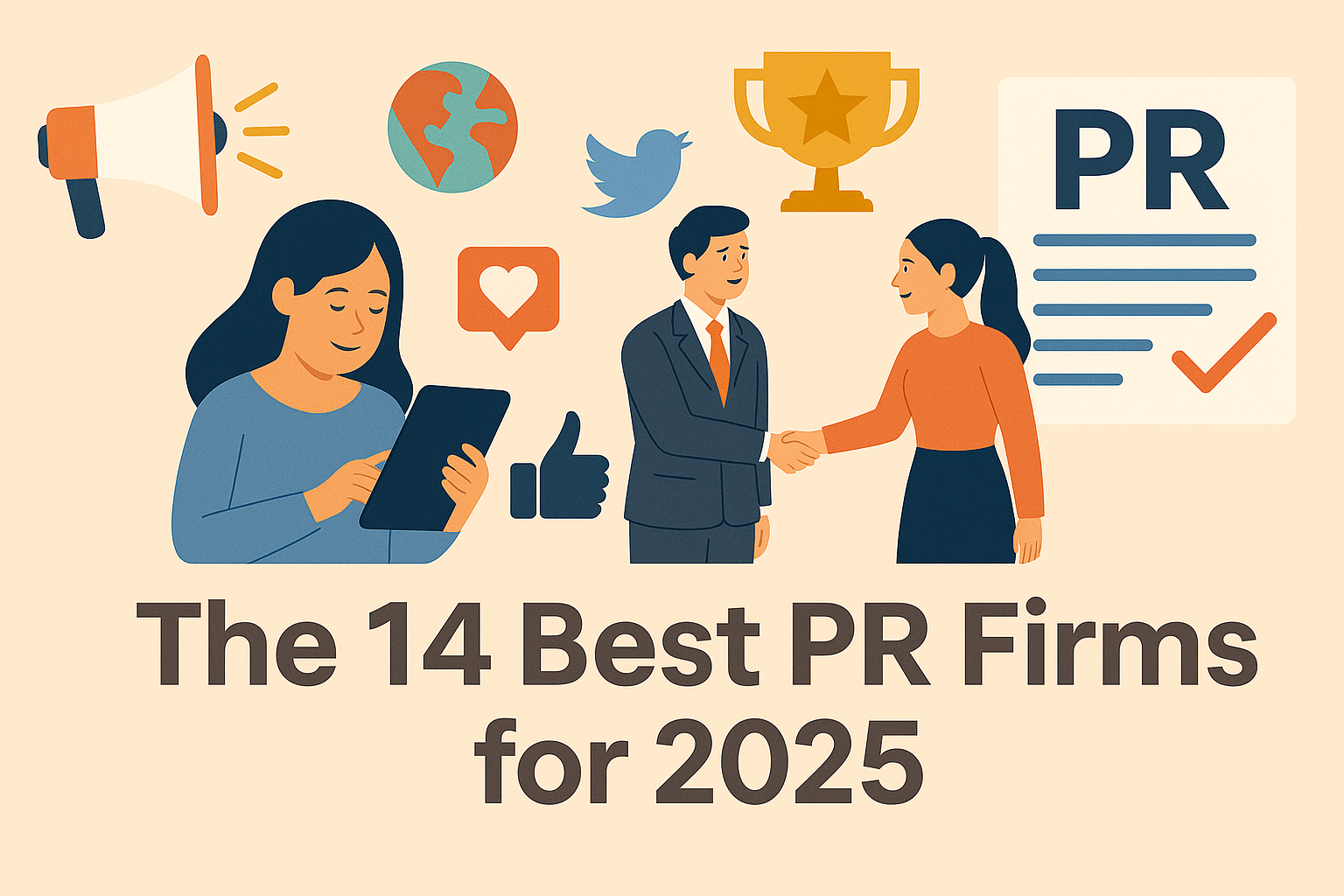Thought leadership is a pillar of B2B branding and B2B marketing.
It’s how certain leaders become go-to sources for journalists, lead industry conversations on social media, and help their brands become frontrunners in their industries.
But how do you get started with thought leadership? And how do you make sure what you’re putting out is high-quality and high-value—not just for your colleagues, but for your clients and customers?
Find out in this mega-guide to thought leadership.
What is thought leadership?
Thought leadership is simply the regular sharing of relevant, valuable information by an informed expert.
You don’t have to be a C-level executive to be a thought leader—all you need is experience in your field, academic or professional expertise, and an informed and specific point of view.
How do you get started with B2B thought leadership?
If thought leadership is a new undertaking for your B2B brand, then you’ll need to begin by identifying who in your organization should and/or could become a thought leader.
Often, there are experts in your company who are already thought leaders. They just haven’t realized it.
Executives who speak at conferences, your IT experts who post lengthy explainer articles on forums, the HR manager who runs a popular HR-focused blog—these are all thought leaders in their own niches.
In general, you’ll want thought leaders in your organization to be some of your more visible members, which is why executives often become thought leaders in their own right.
However, if you have a standout employee who has a good following online and lots to say, you can always help increase their visibility through strategic thought leadership initiatives (including a strong B2B PR campaign).
What are some examples of thought leadership?
Now that you’ve identified your thought leaders, it’s time to decide where and how they’ll share their knowledge.
Here are a few examples of how to do that.
1. Write regular posts on your company blog.
This is one of the most basic but also most effective ways of showcasing your expertise. Set up a blog on your website in which you educate customers about your industry. This is one of the best ways to engage with B2B buyers, as an impressive 71% of buyers read blogs during the B2B buying process.
Related post: 7 Tips For Successful B2B Blogs
2. Contribute guest blogs to other leading industry sites.
Once you’ve established your own blog, it will lend even more credibility to your name if you can contribute an article to other industry websites (including blogs hosted by other leaders in your field). Guest blogs can be a great way to begin establishing backlinks and making a name for yourself.
3. Publish valuable long-form content.
Go beyond blogging. Write ebooks, white papers, or other gated content that people can read in exchange for an email address. The top goal of thought leadership is to give people high-quality, valuable content—content that will help them make buying decisions, yes, but also to better understand industry trends, identify major topics in their field, and more.
4. Host a webinar.
Webinars remain a highly popular form of content online. Because they can not only be watched live but also recorded and made available to anyone, they’ve got a long shelf life and can bring in leads for years.
Related post: Four Reasons To Market Your Business With Webinars
5. Create video content.
If you’re comfortable on camera, create regular video content. It doesn’t have to be lengthy—as Gartner reports, clips of just five seconds to two minutes have high engagement rates on social—it just has to be informative.
Consider creating a video series of weekly Instagram Reels or TikTok videos where you share your take on a trend or a bite-sized piece of advice for others in your field.
You can get more ambitious and create longer videos if you have the time and resources. Interviewing experts in your company, answering frequently asked questions about your industry, and doing live streams on a specific topic are all ways you can create long, highly informative video content.
6. Be helpful on LinkedIn.
LinkedIn is a great tool for reaching out to potential clients. Join groups and take the time to answer people’s questions thoughtfully. Take part in discussions so that you become a familiar voice. You might even want to set up your own group so that you can guide the conversation yourself.
Related post: Downton Abbey Meets LinkedIn: 10 Etiquette Tips for Networking and Teatime
Remember your goal: to help others learn and grow, not promote yourself. In fact, there really shouldn’t be any self-promotion in your thought leadership, aside from mentions of your brand in your bio and perhaps in instructive examples that are relevant to the topic you’re discussing.
Thought leaders don’t need to ask for business—instead, they’re sought out because of their expertise. It may take time, but do your best to trust that process.
How do you create valuable thought leadership content?
So how do you know that the content you’re creating is valuable to your audience?
The simplest answer to that question is: You’ll know based on whether people are engaging or not. If they’re not engaging, even though you’re publishing regularly and amplifying your content through social posting, linking, and paid ads, it’s time to tweak.
To be valuable, readers (or viewers, depending on the format) need to be able to learn something new or understand something in a new way. For example:
- Upcoming trends in the industry that will affect business in the future
- A creative new method for problem-solving
- Reviews of new product offerings
- How trends are affecting business right now
There’s actually a simple acronym created by LinkedIn that can help when it comes to creating thought leadership that improves brand perception and pulls in leads. It’s called the SCORE algorithm—here’s a breakdown.
S: Structure
Having a solid structure for your thought leadership helps both your audience and your brand. On your audience’s side, knowing that your reports, or whitepapers, or blog posts follow a specific structure makes them more easily digestible, especially when consumed on a screen.
On your brand’s side, that structure will give your team a leg up when it comes to developing original, high-quality B2B content, as they’ll have a starting point for each piece.
There’s no need to create an annual trends report from scratch each year, after all—instead, continue using whatever structure has already worked well, speeding up production and giving your thought leaders more time to work on developing something valuable.
C: Contrarian
Ah, the contrarian take. It’s provocative, engaging, and guaranteed to generate some clicks.
We’re offering this element of the SCORE algorithm with a caveat. For some thought leaders, being contrarian works well because it’s already part of their nature, and it’s authentic for them to question widely held ideas, beliefs, or assumptions.
For others, however, it just doesn’t work—and that’s ok. If being contrarian doesn’t work well for your brand or your industry at large, skip it and just focus on being authentic and relevant.
O: Ownable
In other words, make sure your thought leadership is heavily branded. If you’re designing a report, ensure your design matches your brand impeccably—from colors to font to layout. The same goes with your brand voice.
If you haven’t established a strong brand voice yet, now’s the time. You want clients to recognize your voice, whether you’re sharing a shout-out on Twitter or speaking through the pages of a massive annual impact report.
R: Replicable
There’s no need to reinvent the wheel every time you develop a thought leadership piece. If something’s working, replicate it!
Annual trends reports, monthly “My Take” on a trend column, video breakdowns of a difficult concept—these are all replicable ideas that can save your brand time on the creation side while helping your audience become more familiar with you and what to expect from your company (both solid steps toward making your brand famous).
E: Expertise
There’s no thought leadership without expertise—it’s the essential core element. Find ways to showcase your brand’s specific knowledge through a variety of voices.
You don’t have to limit your brand’s thought leadership to the C-suite. If you’ve got a particularly knowledgeable department head or board member, pull them into the thought leadership stable so they can share what they know and build both their own and the larger brand’s reputation.
B2Bs have to invest in thought leadership to grow their market share and earn clients’ trust. By following the guidelines in this post, you can ensure that you’re creating valuable, relevant content that will boost your brand’s reputation and help you build a robust lead generation pipeline.
Need some help? Let us know!





